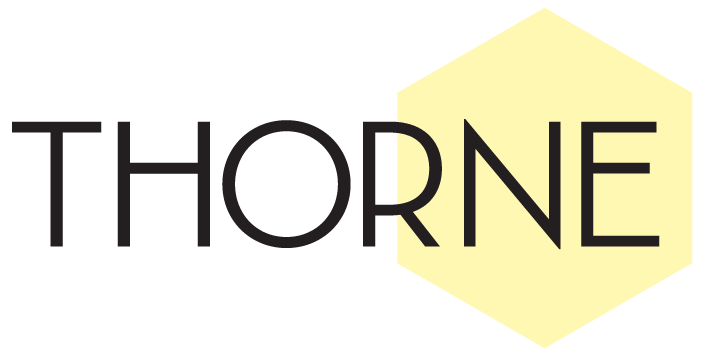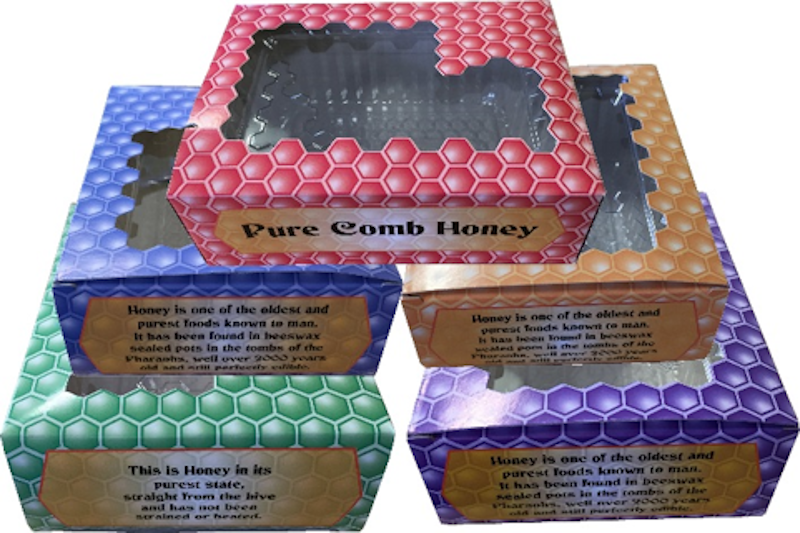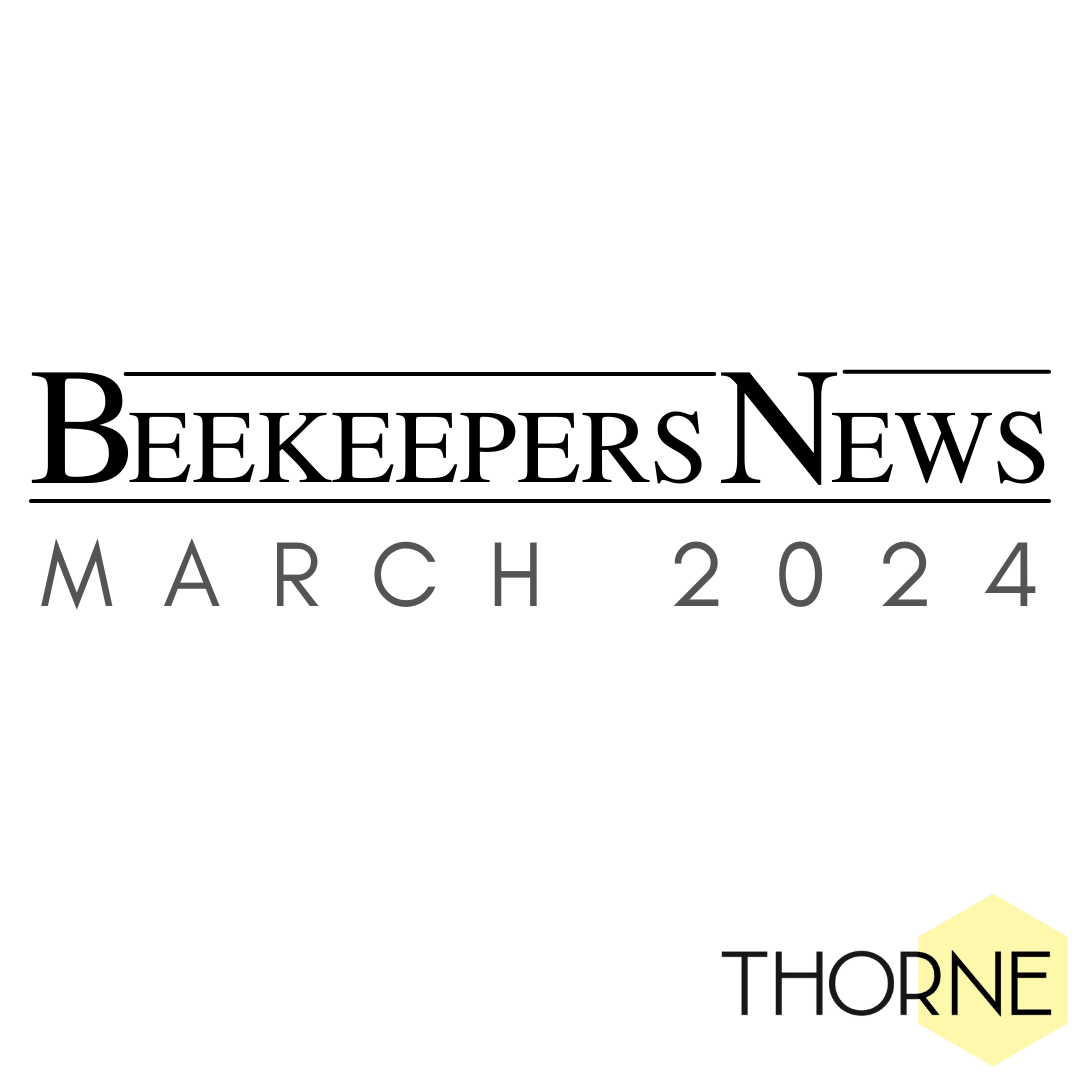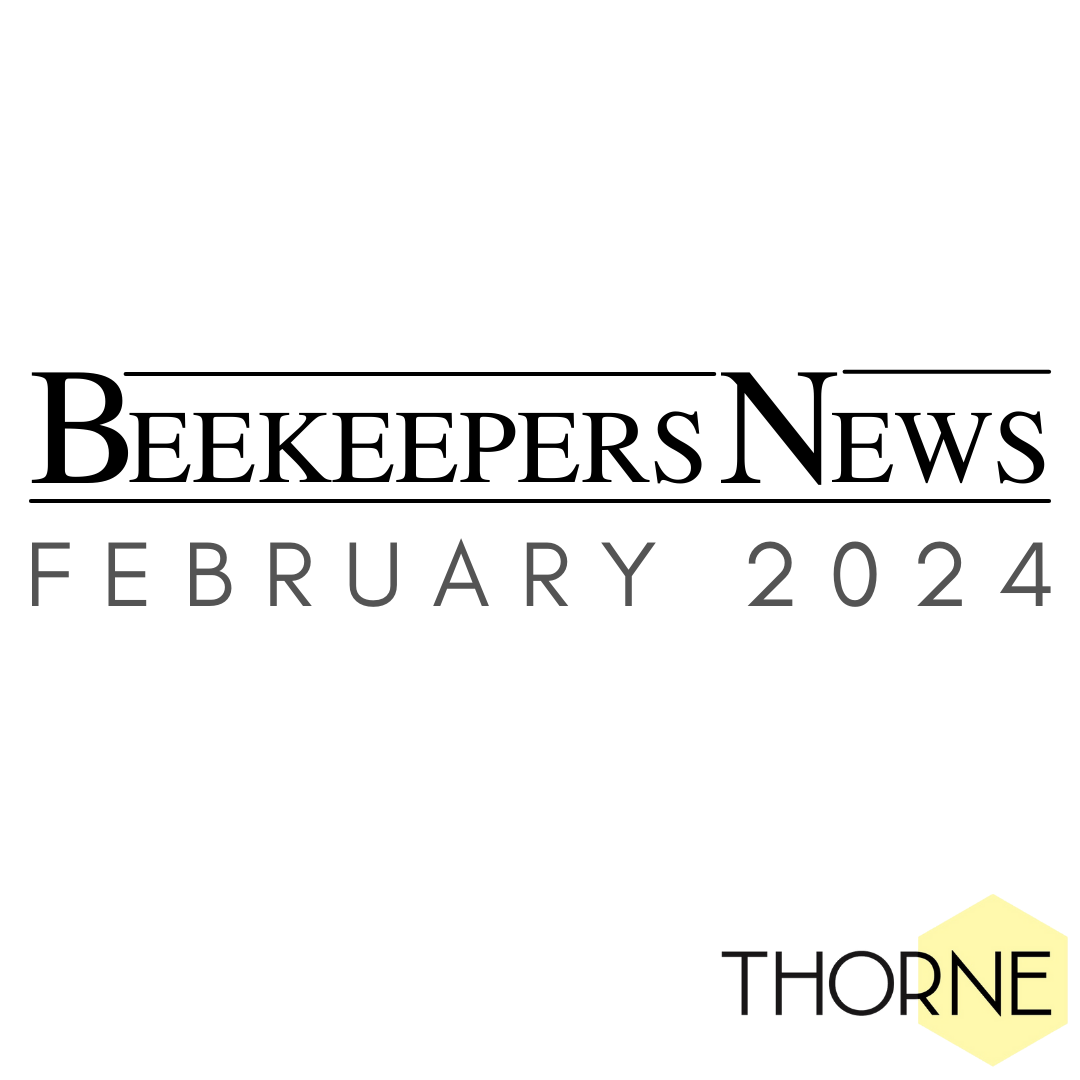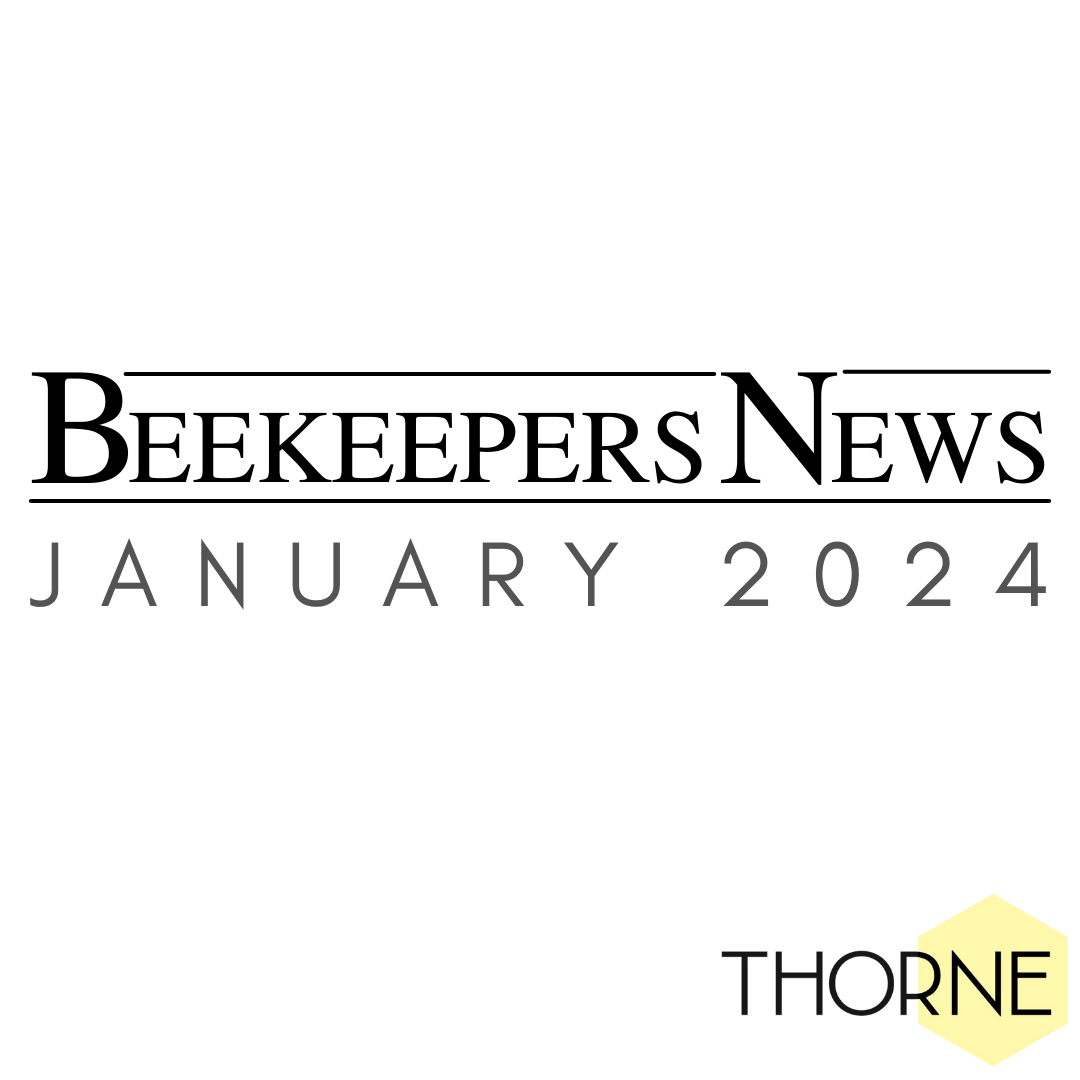July Roundup
What an odd July we have had. The weather seems to change on a daily basis – one-minute gales and the next glorious sunshine. Difficult to plan your beekeeping inspections but the ideal time to start extracting your summer crop of honey.
Honey processing equipment has been flying off the shelves and there was a high demand for our stainless steel range of extractors.
The end of July also meant additions to our website as we published our list of bargains for collection from our Sale Days or the National Honey Show. If you can make the trip, these sale days are well worth coming to. The dates are shown at the end of the newsletter.
Equipment Focus………
I am sure many beekeepers have tried to produce some cut comb honey this year. It really couldn’t be easier when you use a comb cutter, crystal honey containers and our brand new 4Cs packaging.
The heavy gauge stainless steel cutter has a honed cutting edge to ensure a clean cut every time. The spring assisted plunger action aids the comb release and produces an 85x65mm rectangle of pure comb honey, weighing between 6 and 8oz.

Then simply place your comb honey in one of our Crystal Comb Containers (50 cost £6.38). These were a prize winner at the 2011 National Honey Show. They have cell and bee decoration on the top and bottom, corrugated sides and a hinged lid. We thought these containers were so attractive that it was a shame to hide them, and the comb honey, by sticking a label on top. So, we developed our STH (See The Honey) range of labels. The smallest of these fits nicely in the top corner of the container.
If you just want to complete the look why not package the container inside one of our new 4Cs?

The 4Cs are designed to fit the Crystal Comb Containers and come in five bold colours – purple, gold, red, green and blue. The crystal containers themselves are very attractive but then add these sleeves and you have a striking display for your cut comb honey.
The 4Cs are sold in 50s and cost £7.50 per pack.

Ask our Expert
The Bee Gym – Does it really work??
When I first saw one of these “Bee Gyms” I was somewhat sceptical to say the least… The bee gym is a small square plastic plate that locks into the mesh of an open mesh floor (to stop it moving). It has a number of “flippers” standing up vertically from the base plate, and from a pylon in each corner two nylon wires are stretched across. The idea is that the bees can scratch their bodies to displace the Varroa mites even displacing the mites on their backs by passing under the wires. There are several videos on YouTube showing this action but they are in macro close up and to my eye inconclusive.
A few weeks ago I spoke to a beekeeper extoling the virtues of the gym. He ran a top bar hive with a glass observation window. The combs at the front of the hive were drawn down almost to the floor; the top bars at the back of the hive were as yet undrawn. The instructions are to place the gym away from the entrance so as to not dislodge the pollen from the bees’ corbicula. The gym had been placed at the back of the hive (the bees had no reason to go anywhere near it). The customer had a wonderful video on his phone of the bees dropping off the comb, and walking to the back of the hive and circling round and round the device. They must have been deriving some pleasure, relief, benefit from the visit.

Spurred on by the above video I decided to put a couple into my two biggest National (14”x12”) hives. For several years I have had almost completely sealed (open mesh floors); the drawer under the mesh floor has a gap of about an inch and a half, with the drawer in place the air into the hive comes in through the entrance only. The bees can keep the temperature and humidity high, optimal for brood development, and detrimental to the Varroa. I put the gym towards the back left of the floor on a Monday afternoon. The drop for the week prior on the floor was around the twenty mark, in both hives. On the Friday morning I visited the apiary to remove a super I had cleared, and took a quick look to see if anything had happened…
When I pulled out the floor there was a negative image of the Bee Gym on the card. It was as if you had spray painted the gym on the card and then removed the gym, leaving an image behind. There were hundreds of Varroa making up the image. I wish I had had a camera with me at the time. I cleared off the board, a week later the count was substantially reduced (an inch wide strip across the back of the card where the Varroa had crawled to the back of the hive) another week this was reduced to a thin line of Varroa, and after 4 weeks practically none.
The action of the bees on the Gym has moved it across the floor, and is now nearly central. I don’t know if the “novelty” has worn off or if the bees have it under control?
I wondered about removing it, cleaning it and deploying it in another hive, or re-deploying it in the same hive after a rest period of a few weeks, and comparing the drop against the other hive with one left in the whole time. I am personally a fan, and want to find out more about its best use.
Bees for Development Update
Uganda
Bees for Development is very busy working with local partner organisations to demonstrate the importance of beekeeping. Peter Gimaswa, shown here, has lost this year’s maize crop because of a newly arrived invasive crop pest Fall army worm. Fortunately, Peter can rely on his bees as an alternative income source. Thanks to the training he has received from us, Peter can sell honey to buy food for his family, instead of the maize they have lost. Now other people are asking for Peter’s help to show them how to get started with bees. In Uganda, beekeeping is helping chronically poor, rural people to build diverse and resilient livelihoods, to address their vulnerability.
It is the fantastic backing that Bees for Development receives from generous beekeepers that makes this work possible - we are tremendously grateful to all our supporters.


National Honey Show News
If you’ve taken up beekeeping fairly recently, there’s masses for you to do and see at this year’s National Honey Show. As well as our great and well supported main lecture programme, there are the Friday Beecraft Lectures and the Saturday programme aimed specially for interest and practical help to newer beekeepers. But what about your partner and family? If, after half an hour the family have whizzed through and seen the entire National Honey Show – an exhausting thought – there are various attractions nearby: Hampton Court, Kew Gardens, Legoland, Thorpe Park, Windsor, Wisley, to name but a few.
However there’s plenty for them, as well as you, in our Show. There are craft, photography, microscopy, video and junior classes that you and they could enter.
Spring and summer offer the best opportunities for insect photography, and with interests like ours, especially opportunities for bee photography. There is always a spectacular display of photographs and slides within the “Photographic, Microscopy, Videos and Essay” classes at The National Honey Show. Anyone can enter, beekeeper or not, young or old, from the UK or anywhere in the world. Copyright remains with the exhibitor, so do have a go. For those interested in learning more before dipping in, The National Honey Show usually holds at least one photography workshop. This year’s are planned to be on “Photography for Fun and Profit” and will be held on the Friday and again on the Saturday afternoon. Workshops are popular, need to be pre-booked and bookings open on 1st September.
It’s fascinating to see the exhibits. You can check out the standard and level you are competing with from previous years’ entries shown in the publicity photos on the website, and of course there’s nothing quite like the excitement of winning a prize!
The National Honey Show, 26 to 28 October 2017, Sandown Park Racecourse, Esher, KT10 9AJ www.honeyshow.co.uk
Upcoming Events
Thornes of Scotland Sale Days - Friday 11th August 3.00pm to 5.00pm
Saturday 12th August 9.30am to 11.30am
Thornes of Windsor Sale Day - Saturday 2nd September 10am – 1.00pm
Thornes of Stockbridge Sale Day - Saturday 23rd September 10am – 1.00pm
Rand Sale and Open Day - Saturday 14th October 10am onwards
We are now taking orders for collection at the above sales. (insert link to our sale page here please!!)
